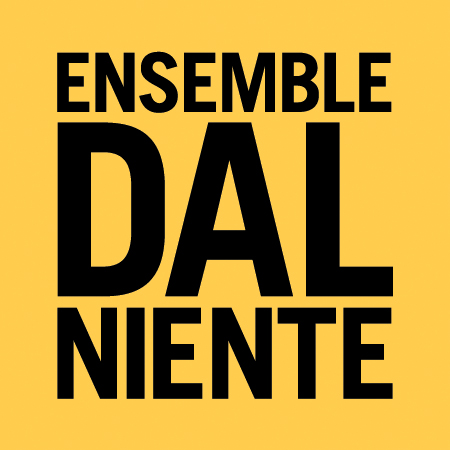The centerpiece of Party 2018 is both old (relatively) and new (to us, anyway). For an ensemble dedicated to bringing the newest of new music to our audiences, how much weirder does it get than performing Pierrot Lunaire, written by Arnold Schoenberg in 1912? Violist and social media guru Ammie Brod went to Carrie Henneman Shaw, the brains behind this restaging of a classic work of contemporary music, to get a better idea of what she has in store for Chicago.
Ammie: So I keep hearing things about, like, shadow puppets and giant domes and things. Yes? Please say yes.
Carrie: Yes! When we started talking about this project I knew that I wanted to do shadow theater, and also that I wanted to find ways to use Constellation's stage dimensions in an interesting way, which means a larger-scale production than anything I’ve attempted in previous performances.
I have a friend in Minneapolis, Lizz Windnagel, who is involved in puppet theater and who agreed to work with me, and we decided that we wanted to project shadows onto a dome, kind of suggesting the moon, because that plays a big role in the piece. So I went and bought a garden tent (basically the bones of a greenhouse), and we’ve been building this 9-foot-tall dome that will have shadow puppetry projected onto it during the show.
Ammie: Awesome! What kinds of puppets are we going to see?
Carrie: Well, there’s this really tall bird puppet. It’s really cool, and concertgoers will be able to bid on it during the silent auction at the concert. Also, there’s a crone moon, a forest, and of course, a Pierrot. Lots and lots of puppets.
Ammie: *thoughtful contemplation*
Ammie: I remember you telling me that you were going to be working with a choreographer at Avaloch Farm while you worked on your ideas for this staging. Can you tell me a little bit about that?
Carrie: Yes, I worked with choreographer Penny Freeh in September. We talked a lot about my approach to movement, and how that will affect how I interact with the puppets, and it was really helpful for me to talk through the show with somebody who wasn’t familiar with the piece. We watched a lot of videos of other productions, which was really interesting for me because I’ve done a lot of training in the more classical Renaissance-style commedia dell’arte style of performance but most productions are geared more towards a sort of mime/Parisian clown thing. And while that’s probably more like what Schoenberg might have been seeing when he was writing this piece, I think it’s missing some important parts of the original commedia character identities.
Specifically, I think contemporary readers don't realize how important class was in defining commedia characters and how audiences understood them. In commedia, there are masters and servants - for example, a rich young widow and her principal servant Pedrolino. The widow is funny because she's vain, volatile, and powerful. Her servant is funny, in part, because he has to serve this person who is all of these things, but also because he has peculiarities that draw attention to ways in which he could never belong in the ruling class - his lack of heroism and bravery, his ridiculous clothes, his total dependence on 'service' as his one marketable skill. Both can win and lose a battle here and there, but lower class characters are ultimately pawns in their masters' games, hoping to come out with an extra loaf of bread or maybe a kiss from Colombina. The audience is meant to be deeply invested in the heroic lovers getting together by the end of the play. But Pierrot being hungry? Pierrot being conscripted into the army and being totally hapless as a soldier? We're not supposed to feel too worried about that. Pierrot being beaten, Donald Duck getting hit on the head with something: it’s the same idea.
Ammie: Okay then. How is that interpretation going to factor into your approach to this performance?
Carrie: Well, I wanted to shift away from the usual 'clown' angle, and I got to thinking about parallels between the way in which commedia becomes dark humor in the hands of 20th-century artists and contemporary dark humor, particularly the ways some parts of our own culture seek to defang us.
Ammie: What are you excited for in this project? And do you have any final thoughts for us?
Carrie: For Dal Niente to play a piece of straight-up early 20th century music is a new thing; it pushes us to explore a different type of music and performance together than we usually do. What will it be like to play relatively old music with this group of people? What happens when we juxtapose the old(er) and very new? What do we, as early 21st-century performers, bring to a piece from more than 100 years ago?
Shaw’s restaging of Pierrot Lunaire takes place June 2 at Constellation Chicago as part of Party 2018. Pierrot is the final act of STAGED, our season-long series of interdisciplinary projects involving theater, dance, opera, and (woohoo!) shadow puppetry. More information about Party 2018 and ticket info here, and more thoughts from conductor Michael Lewanski on why Pierrot is, in fact, new music can be found in this scintillating blog entry.



